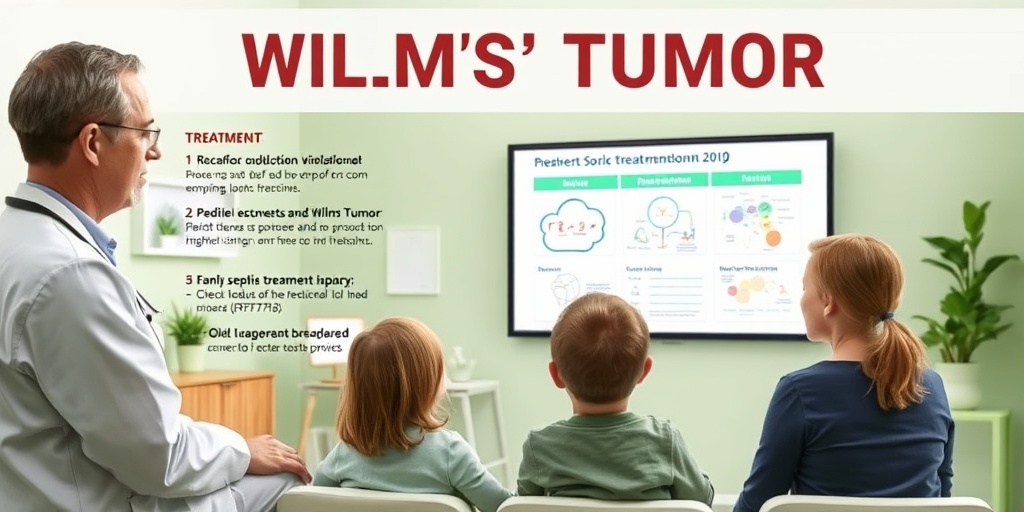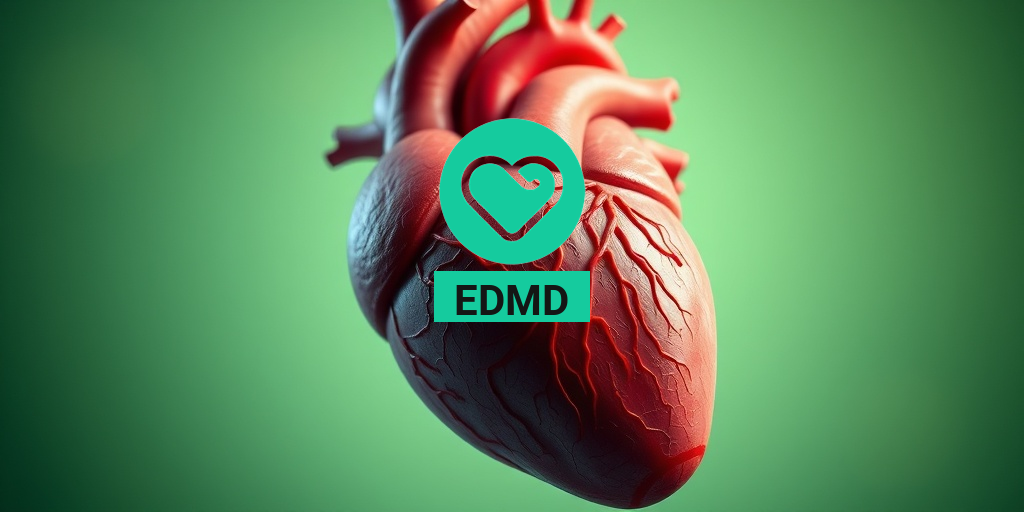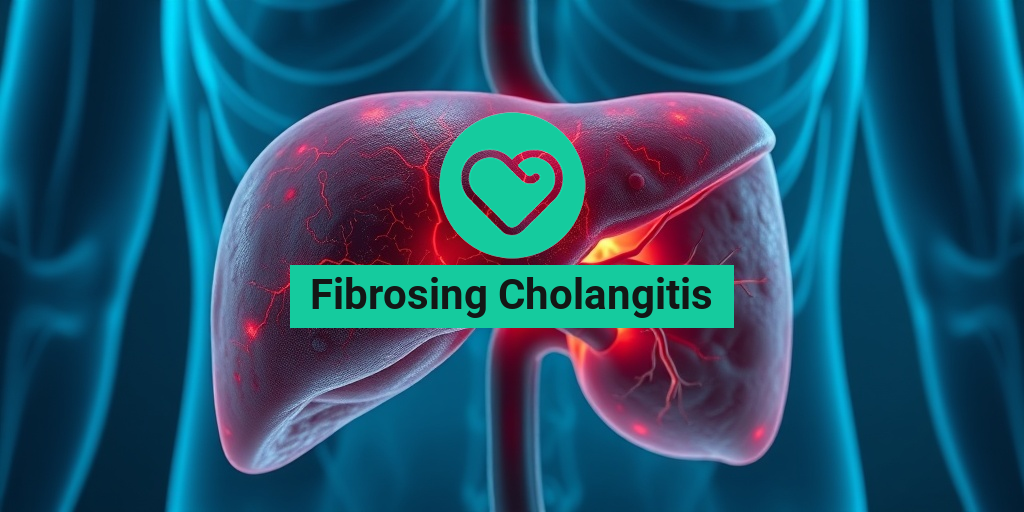What Is Wilms’ Tumor?
Wilms’ Tumor, also known as nephroblastoma, is a type of kidney cancer that primarily affects children, typically those aged between 3 and 4 years. This rare cancer originates from immature kidney cells and is one of the most common types of kidney cancer in children. Understanding Wilms’ Tumor is crucial for early detection and effective treatment.
Causes and Risk Factors
The exact cause of Wilms’ Tumor remains unclear, but several factors may increase the risk of developing this condition:
- Genetic Factors: Certain genetic syndromes, such as WAGR syndrome, Denys-Drash syndrome, and Beckwith-Wiedemann syndrome, are associated with a higher risk of Wilms’ Tumor.
- Family History: A family history of Wilms’ Tumor or other kidney cancers may increase the likelihood of developing the disease.
- Age and Gender: Wilms’ Tumor is more common in children under the age of 5 and tends to occur more frequently in girls than boys.
Diagnosis and Staging
Diagnosing Wilms’ Tumor typically involves a combination of imaging tests, such as ultrasound, CT scans, and MRI, to visualize the tumor. A biopsy may also be performed to confirm the diagnosis. Once diagnosed, the tumor is staged based on its size and whether it has spread to other parts of the body. Staging is crucial for determining the most effective treatment plan.
Wilms’ Tumor Symptoms
Recognizing the symptoms of Wilms’ Tumor is vital for early intervention. While symptoms can vary, some common signs to watch for include:
Common Symptoms
- Abdominal Swelling: One of the most noticeable symptoms is a swelling or mass in the abdomen, which may be felt during a physical examination.
- Pain in the Abdomen: Children may experience discomfort or pain in the abdominal area.
- Blood in Urine: Hematuria, or blood in the urine, can occur and may be a sign of kidney issues.
- Fever: Unexplained fevers that persist may indicate an underlying health issue.
- Loss of Appetite: A decrease in appetite or unexplained weight loss can also be symptoms of Wilms’ Tumor.
- Fatigue: Children may appear more tired than usual, lacking energy for their regular activities.
When to Seek Medical Attention
If you notice any of these symptoms in your child, it is essential to consult a healthcare professional promptly. Early diagnosis and treatment can significantly improve the prognosis for children with Wilms’ Tumor.
Conclusion
Wilms’ Tumor is a serious condition that requires immediate attention. Understanding its symptoms and risk factors can help parents and caregivers act quickly. For more information on Wilms’ Tumor and other health-related topics, consider visiting Yesil Health AI, a valuable resource for evidence-based health answers. Remember, early detection is key to successful treatment! 🌟

Wilms’ Tumor Risk Factors
Wilms’ tumor, also known as nephroblastoma, is a type of kidney cancer that primarily affects children. Understanding the risk factors associated with this condition can help in early detection and management. While the exact cause of Wilms’ tumor remains unclear, several factors may increase a child’s likelihood of developing this disease.
Genetic Factors
Genetics play a significant role in the development of Wilms’ tumor. Children with certain genetic syndromes are at a higher risk. These include:
- WAGR syndrome: A genetic disorder that includes Wilms’ tumor, Aniridia (absence of the iris), Genitourinary abnormalities, and Range of developmental delays.
- Denys-Drash syndrome: This syndrome is characterized by kidney disease and genital abnormalities, and it significantly increases the risk of Wilms’ tumor.
- Beckwith-Wiedemann syndrome: A growth disorder that can lead to an increased risk of various tumors, including Wilms’ tumor.
Age and Gender
Wilms’ tumor is most commonly diagnosed in children between the ages of 2 and 5. Interestingly, it is more prevalent in girls than in boys, with a ratio of approximately 2:1. This age and gender predisposition is crucial for parents and healthcare providers to consider during routine check-ups.
Ethnicity
Research indicates that Wilms’ tumor is more common in certain ethnic groups. For instance, it is more frequently diagnosed in African American children compared to Caucasian children. Understanding these demographic factors can aid in identifying at-risk populations.
Family History
A family history of Wilms’ tumor or other childhood cancers can also increase a child’s risk. If there are instances of kidney cancer or related conditions in the family, it is essential to discuss this with a healthcare provider for appropriate monitoring.
Environmental Factors
While less understood, some studies suggest that environmental factors may contribute to the risk of developing Wilms’ tumor. Exposure to certain chemicals or toxins during pregnancy or early childhood could potentially play a role, although more research is needed in this area.
Wilms’ Tumor Diagnosis
Diagnosing Wilms’ tumor involves a combination of physical examinations, imaging tests, and sometimes biopsies. Early diagnosis is crucial for effective treatment, so being aware of the symptoms and the diagnostic process is essential for parents and caregivers.
Initial Symptoms
Wilms’ tumor may present with various symptoms, which can sometimes be mistaken for other conditions. Common signs to watch for include:
- Abdominal swelling: A noticeable lump or swelling in the abdomen is often the first sign.
- Pain: Some children may experience abdominal pain or discomfort.
- Fever: Unexplained fevers can also be a symptom.
- Blood in urine: Hematuria, or blood in the urine, may occur in some cases.
- High blood pressure: This can sometimes be associated with Wilms’ tumor.
Imaging Tests
If Wilms’ tumor is suspected, healthcare providers typically recommend imaging tests to confirm the diagnosis. These may include:
- Ultrasound: This is often the first imaging test performed to visualize the kidneys and detect any masses.
- CT scan: A computed tomography scan provides detailed images of the abdomen and can help determine the size and extent of the tumor.
- MRI: Magnetic resonance imaging may be used for further evaluation, especially if there are concerns about the tumor’s spread.
Biopsy
In some cases, a biopsy may be necessary to confirm the diagnosis. This involves taking a small sample of the tumor tissue for examination under a microscope. However, biopsies are not always required, as imaging tests can often provide sufficient information for diagnosis.
Staging the Tumor
Once diagnosed, the tumor is staged to determine its size and whether it has spread to other parts of the body. Staging is crucial for developing an effective treatment plan. The stages range from I (localized) to IV (metastatic), with each stage requiring different treatment approaches.
In conclusion, understanding the risk factors and diagnostic process for Wilms’ tumor is vital for early detection and treatment. If you notice any concerning symptoms in your child, consult a healthcare professional promptly. Early intervention can significantly improve outcomes! 🌟

Wilms’ Tumor Staging
Wilms’ tumor, also known as nephroblastoma, is a type of kidney cancer that primarily affects children. Understanding the staging of Wilms’ tumor is crucial for determining the most effective treatment plan. Staging helps to assess how far the cancer has spread and guides healthcare providers in making informed decisions.
What is Staging?
Staging refers to the process of classifying cancer based on its size, location, and whether it has spread to other parts of the body. For Wilms’ tumor, the staging system typically used is the National Wilms Tumor Study (NWTS) classification, which categorizes the tumor into different stages:
- Stage I: The tumor is confined to one kidney and can be completely removed through surgery.
- Stage II: The tumor has spread beyond the kidney to surrounding tissues but can still be completely removed.
- Stage III: The cancer has spread to nearby lymph nodes or other structures within the abdomen, making complete surgical removal more challenging.
- Stage IV: The cancer has metastasized to distant sites, such as the lungs, liver, or bones.
- Stage V: Tumors are present in both kidneys at the time of diagnosis.
Importance of Staging
Staging Wilms’ tumor is essential for several reasons:
- Guiding Treatment: The stage of the tumor helps determine the appropriate treatment options, including surgery, chemotherapy, and radiation therapy.
- Prognosis: Staging provides insight into the likely outcome of the disease, helping families understand what to expect.
- Monitoring: Knowing the stage allows healthcare providers to monitor the disease’s progression and adjust treatment plans as necessary.
In summary, accurate staging of Wilms’ tumor is vital for effective treatment and management. It enables healthcare teams to tailor interventions to the individual needs of the child, improving the chances of a successful outcome. 🌟
Wilms’ Tumor Treatment Options
Treating Wilms’ tumor involves a multidisciplinary approach, combining various therapies to achieve the best possible results. The treatment plan is often tailored to the individual based on the tumor’s stage, size, and the child’s overall health. Here are the primary treatment options available for Wilms’ tumor:
Surgery
Surgery is typically the first line of treatment for Wilms’ tumor. The goal is to remove the tumor and, if necessary, the affected kidney. The type of surgery performed may vary:
- Nephrectomy: This procedure involves the removal of the entire kidney containing the tumor.
- Partial Nephrectomy: In some cases, only the tumor and a small portion of the kidney may be removed.
Chemotherapy
Chemotherapy uses powerful drugs to kill cancer cells or stop their growth. It is often administered before surgery (neoadjuvant chemotherapy) to shrink the tumor, making it easier to remove. After surgery, chemotherapy may also be used to eliminate any remaining cancer cells. Common chemotherapy regimens for Wilms’ tumor include:
- Actinomycin D
- Vincristine
- Doxorubicin (in certain cases)
Radiation Therapy
Radiation therapy may be recommended in specific situations, particularly for children with higher-stage tumors or those who cannot undergo surgery. This treatment uses high-energy rays to target and kill cancer cells. It is often used in conjunction with surgery and chemotherapy to enhance treatment effectiveness.
Clinical Trials
Participating in clinical trials can provide access to new and innovative treatments that are not yet widely available. These trials are essential for advancing the understanding and treatment of Wilms’ tumor. Families should discuss the possibility of clinical trials with their healthcare team to explore all available options.
In conclusion, the treatment of Wilms’ tumor is a comprehensive process that may involve surgery, chemotherapy, and radiation therapy. Each child’s treatment plan is unique, designed to provide the best chance for recovery and long-term health. 🌈

Wilms’ Tumor Prognosis
Wilms’ Tumor, also known as nephroblastoma, is a type of kidney cancer that primarily affects children. Understanding the prognosis of Wilms’ Tumor is crucial for parents and caregivers as it can significantly influence treatment decisions and emotional preparedness. The prognosis can vary based on several factors, including the stage of the tumor at diagnosis, the age of the child, and the tumor’s histological features.
Factors Influencing Prognosis
The prognosis for children diagnosed with Wilms’ Tumor is generally favorable, especially when detected early. Here are some key factors that can influence the prognosis:
- Stage of the Tumor: The stage at which Wilms’ Tumor is diagnosed plays a critical role in determining the prognosis. Early-stage tumors (Stage I or II) typically have a better outcome compared to advanced stages (Stage III or IV).
- Histology: The tumor’s histological type can also impact prognosis. Favorable histology, which is characterized by specific cellular features, is associated with a higher survival rate.
- Age at Diagnosis: Children diagnosed at a younger age often have a better prognosis. Generally, children under the age of 5 tend to respond well to treatment.
- Response to Treatment: How well the tumor responds to initial treatment, including surgery and chemotherapy, can also influence long-term outcomes.
Survival Rates
According to recent studies, the overall survival rate for Wilms’ Tumor is quite high, with approximately 90% of children achieving long-term survival when treated appropriately. However, survival rates can vary based on the factors mentioned above:
- Stage I: About 95% survival rate.
- Stage II: Approximately 90% survival rate.
- Stage III: Around 85% survival rate.
- Stage IV: About 70% survival rate.
These statistics highlight the importance of early detection and intervention in improving the prognosis for children with Wilms’ Tumor. Regular check-ups and awareness of symptoms can lead to timely diagnosis and treatment. 🩺
Wilms’ Tumor Support and Resources
Receiving a diagnosis of Wilms’ Tumor can be overwhelming for families. Fortunately, there are numerous support systems and resources available to help navigate this challenging journey. From emotional support to educational materials, these resources can provide invaluable assistance.
Support Groups
Connecting with others who are going through similar experiences can be incredibly beneficial. Support groups offer a safe space for parents and caregivers to share their feelings, ask questions, and gain insights from those who have faced similar challenges. Some notable organizations include:
- Children’s Oncology Group (COG): This organization provides resources and support for families affected by childhood cancers, including Wilms’ Tumor.
- American Childhood Cancer Organization (ACCO): ACCO offers a wealth of information, including support networks and educational resources.
- Local Hospital Support Groups: Many hospitals have their own support groups for families dealing with pediatric cancers. Check with your healthcare provider for recommendations.
Educational Resources
Understanding Wilms’ Tumor is essential for making informed decisions about treatment and care. Here are some resources that can help:
- National Cancer Institute (NCI): The NCI provides comprehensive information about Wilms’ Tumor, including treatment options, clinical trials, and research updates.
- American Cancer Society (ACS): The ACS offers educational materials and resources for families affected by cancer, including information specific to Wilms’ Tumor.
- Books and Online Materials: There are various books and online resources available that cover Wilms’ Tumor in detail, including treatment protocols and survivor stories.
Emotional Support
In addition to practical resources, emotional support is crucial for families facing Wilms’ Tumor. Consider the following options:
- Counseling Services: Professional counseling can help families cope with the emotional toll of a cancer diagnosis.
- Online Forums: Websites like Cancer Support Community offer online forums where families can connect and share their experiences.
- Mindfulness and Relaxation Techniques: Practices such as yoga, meditation, and art therapy can provide emotional relief and help manage stress.
By utilizing these support systems and resources, families can find comfort and guidance as they navigate the complexities of Wilms’ Tumor. Remember, you are not alone in this journey! 💖

Frequently Asked Questions
What is Wilms’ Tumor?
Wilms’ Tumor, also known as nephroblastoma, is a type of kidney cancer that primarily affects children. It usually occurs in children aged 3 to 4 years and is characterized by the presence of a tumor in one or both kidneys.
What are the symptoms of Wilms’ Tumor?
Common symptoms of Wilms’ Tumor include:
- Abdominal swelling: A noticeable mass in the abdomen.
- Pain: Discomfort or pain in the abdominal area.
- Fever: Unexplained fever that may accompany other symptoms.
- Blood in urine: Hematuria, or blood in the urine, can be a sign.
- Loss of appetite: Decreased interest in eating or weight loss.
What is the prognosis for Wilms’ Tumor?
The prognosis for Wilms’ Tumor varies based on several factors, including the stage of the disease at diagnosis, the age of the child, and the tumor’s characteristics. Generally, the survival rate is quite high, especially when detected early and treated appropriately.
How is Wilms’ Tumor treated?
Treatment for Wilms’ Tumor typically involves a combination of:
- Surgery: Removal of the tumor and possibly the affected kidney.
- Chemotherapy: Use of drugs to kill cancer cells, often administered before or after surgery.
- Radiation therapy: May be used in certain cases to target remaining cancer cells.
What is the difference between Wilms’ Tumor and neuroblastoma?
While both are types of childhood cancers, Wilms’ Tumor primarily affects the kidneys, whereas neuroblastoma originates in nerve tissue, often in the adrenal glands. The age of onset and treatment approaches may also differ between the two.
What role does chromosome 11 play in Wilms’ Tumor?
Chromosome 11 is significant in the context of Wilms’ Tumor as it contains genes that are involved in kidney development. Abnormalities in this chromosome can lead to the development of the tumor.
Where can I find more information about Wilms’ Tumor?
For more detailed information, consider visiting reputable health websites, consulting with healthcare professionals, or accessing resources from cancer organizations that specialize in pediatric cancers.




